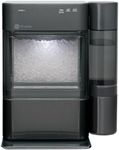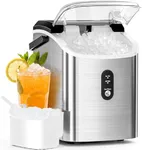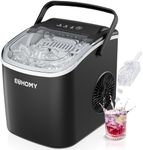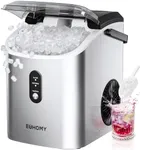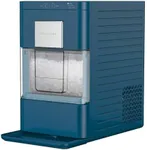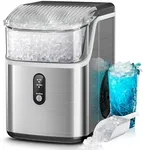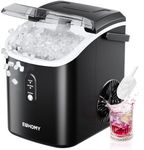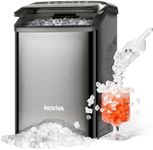Buying Guide for the Best Ice Makers
When choosing an ice maker, the key is to match the machine’s features and capacity to your needs. Think about where and how you’ll use it—entertaining guests, keeping drinks cold at a party, or for daily kitchen use. Factors like how quickly you want ice, how much you need at once, and the space available in your home will help shape your decision. Make sure to also consider ease of cleaning and whether you'd prefer plumbed-in or manual water filling. A good fit is an ice maker that meets your usage habits without adding hassle.Ice Production CapacityIce production capacity is the amount of ice the machine can make in a certain period, usually measured in pounds per day. This is important because choosing the right capacity ensures you have enough ice when you need it, without wasting energy or space. Smaller units typically produce around 20 pounds per day, good for personal or small family use. Medium units can produce 26-40 pounds, suitable for regular gatherings. Large machines, often 40 pounds or more a day, are best for frequent hosting or even light commercial use. To pick the right one, think about how much ice you use on a busy day; occasional use means a lower capacity is fine, while large parties or multi-person households may need more.
Ice Storage CapacityIce storage capacity is how much finished ice the maker can hold at one time. This matters because if the storage is too small, the machine will stop making ice until you empty some out, causing possible delays. Small storage capacities (less than a couple pounds) suit single users or light use. Mid-range (2-3 pounds) fits average households, while larger bins (over 3 pounds) are better for frequent or heavy use. Assess how quickly you and your guests go through ice to find a capacity that lets you always have some on hand without constant refilling.
Speed of Ice MakingThe speed at which a machine produces a batch of ice, often measured in minutes per cycle, affects how long you’ll wait for ice after turning it on. Faster machines can deliver ice in as little as 6-9 minutes per cycle, while slower ones may take 15 minutes or more. Fast speeds are important if you want ice on demand or for spontaneous events. If you prepare early or use ice steadily through the day, you can get by with a slower model. Match the speed to your patience and if you need ice in a hurry or in advance.
Type and Size of IceIce makers create different shapes and sizes of ice, such as bullet, nugget, cube, or flake. This matters because some drinks or uses (like blended drinks, seafood displays, or whisky) work better with a particular type. Bullet and nugget ice are soft and chewable, cube ice is classic and melts slower, while flake ice is best for displays. Many machines allow you to choose from more than one size. Think about how you most often use ice and what feels best in your drinks or meals.
Water SourceSome ice makers need to be connected directly to a water line, while others have a refillable water reservoir. Plumbed-in models are convenient for continuous use, but installation might be more complicated and less portable. Reservoir designs are easier and can be moved around, but they require manual refilling. If you want convenience and don’t mind installation, consider plumbed-in; for flexibility or portability, choose a manual-fill model.
Ease of CleaningKeeping your ice maker clean is important for hygiene and taste. Some models have self-cleaning functions, while others require manual attention. Machines with removable parts are easier to clean. If you don’t want to fuss with frequent cleaning, look for features that simplify maintenance. If you’re willing to clean by hand, a basic unit might do. Consider your willingness and ability to perform upkeep to decide what’s best for you.
Size and PortabilityThe physical size of the ice maker and how easily it can be moved is especially important if you have limited countertop space or plan to use it in different places (like taking it to parties, outdoors, or on trips). Compact models are light and easy to move, suitable for small kitchens or occasional use. Larger, heavier ones fit best in fixed spots or for higher-capacity needs. Think about where you'll keep the machine and whether you might need to move it around to choose the ideal size.


